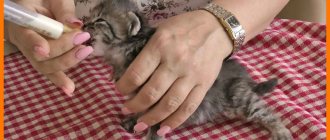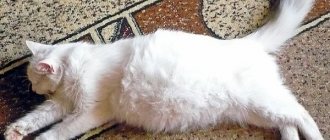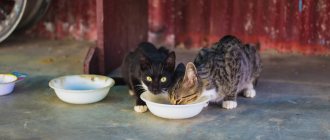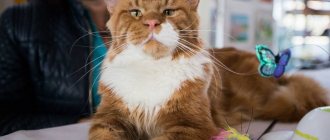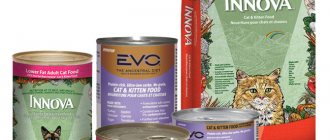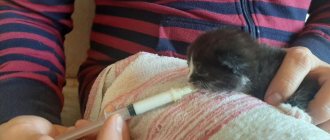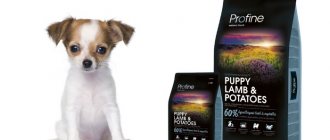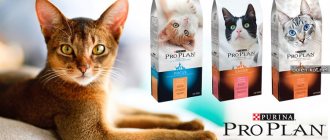Let's face it. There's something special about home-cooked food that no restaurant—no matter how fancy—can replicate. Nothing beats the delicious taste of home-cooked food.
What's worse about our cats? After all, they are part of the family too! But giving your cat leftovers from your plate is not healthy. But making her own dish is not only healthy, but it will also satisfy all your cat’s needs, and there will also be a piece of your love in this food.
And yes, it's much easier than you think. You can make great cat food with simple ingredients you may already have in your kitchen. It's fast, accessible and extremely fun. Why not?
In this article, we'll explain everything you need to know to become a better cat chef, from ingredients to recipes and helpful tips.
Why should you try cooking for your cat?
Besides the obvious pride you'll feel in creating delicious treats for your cat, there are numerous real benefits.
It's more natural. Cats are highly developed predators. A diet made entirely from commercial foods may satisfy their nutritional needs, but will not satisfy their carnivorous instincts.
It's healthier. Kittens have sharp, sharp teeth that were designed for slicing and tearing raw meat. Processed foods do not provide the same health benefits. There are countless benefits of natural foods for your cat's health.
Easier to digest. When your little predator chews your tasty food, a lot of saliva is released, which signals the cat's stomach to prepare important stomach acids, thereby improving digestion.
It's more fun. Once you prepare the recipes we have prepared for you below, you will be able to enjoy watching your cat. And believe me, watching her eat your super dish is a lot of fun.
Easier to control. The fact is that the choice of products and responsibility for the cooking process will be entirely in your hands. This means that nothing unnecessary will get into the cat’s diet. And believe me, it’s much easier than reading the ingredients of ready-made food.
These are just a few reasons to make your own cat food, but you can find many more reasons if you dig deeper into the world of cat cooking.
However, there is one very important question that needs to be answered before you start cooking!
Vitamins and minerals
These elements are very important in a natural diet. To replenish them, cats should be given specially grown grass or sprouted oats. Recommends selectively adding brewer's yeast to animal food to replenish B vitamins.
Since the usual food that a person can offer to their pets, as a rule, contains an insufficient amount of vitamins and minerals, when feeding cats on a natural basis, it is imperative to give cats special vitamin and mineral complexes. They contain important nonessential and essential amino acids, usually Omega-3 and 6 fatty acids.
Taurine must be included in the diet; it is one of the most significant additional elements in a cat’s diet. This amino acid in the cat’s body, unlike the human body, is not formed independently. If it is lacking in the daily diet, the functioning of the following systems of the pet’s body deteriorates: visual, cardiovascular and reproductive, gastrointestinal tract, and there is also a decrease in overall tone.
It is recommended to give vitamin-mineral complexes to pets in exact dosages according to the instructions, since their excess is just as undesirable as their deficiency.
Should food be used raw or cooked?
This is a more complex question than it seems. Some experts recommend raw foods, while others insist on processed foods. The truth is that both types of homemade food—raw and cooked—have benefits for your little furbaby.
The most important factor in protecting your cat's health is a well-balanced diet.
When food is cooked, a lot of natural proteins and nutrients are lost. However, the treatment removes bacteria and other microorganisms that may pose a health risk to the kitten. Since childhood, we have been told about the dangers posed by raw food, such as worms.
But your cat's biology is built entirely around consuming small wild-caught animals. What seems dangerous to you is quite natural to her. The truth is that you can make food from raw ingredients and it will be completely safe for your cats. You just need to be selective with your ingredients and be mindful of food safety.
When meat comes from a healthy animal, it is almost certainly free of any pathogens. Bacteria only exist on surfaces that must be cleaned thoroughly and safely. Internal muscle tissue in healthy animals is free of dangerous microbes.
This is why raw, pre-ground meat is never recommended for kittens. When grinding, microbes are introduced into the muscle tissue, and it is impossible to get rid of them without heat treatment. Therefore, you should grind meat at home, because bacteria will not have time to multiply.
You don't have to choose one: raw or cooked. It is quite possible to find a compromise in preparing cat food. If you are confident in the quality of the raw product, then it is unlikely to harm your cat. However, sometimes it is not necessary to neglect heat treatment.
Remember: your cat is completely dependent on you for all her needs.
How many times a day
The frequency of food intake depends on the age of the pet:
- a kitten from 1 month to 3 months is fed 6 times a day, at regular intervals;
- from 3 months to six months he is gradually transferred to three meals a day;
- It is acceptable to start feeding a cat older than 8 months twice a day, like an adult.
The age limits given are general. You need to watch the baby. If a nine-month-old kitten, with two meals a day, runs after its owner and begs, then the third meal needs to be returned. It should be taken into account that large breeds (for example, Maine Coons, Ragdolls) continue to grow up to two years, they need to be transferred to an adult feeding regimen taking into account their individual characteristics.
How to switch to homemade food
Pets are often like children, and they all have their own unique personalities.
Some are whimsical and capricious - they fly from one thing to another and prefer a life of excitement and rapid change. These opportunistic predators can embrace a new diet as if they've been waiting their entire lives for it.
Others prefer order, a daily routine - and they will learn and get used to new rules in their routine. It's not always fast and fun, more often it requires a lot of patience and understanding.
A gradual change in cooking habits is better for both you and your cat. Instead of giving your cat a whole pig at once, you can choose a few days a week for a small feast at home. You can offer your cat a new recipe 1-2 times a week and observe her reaction. It’s just like feeding babies.
But there is also another way. It involves mixing new food with old food, gradually replacing it in larger proportions until the cat gets used to the new diet.
Don't worry if your cat is less enthusiastic than you. You may think your cooking project is a masterpiece, but your cat knows exactly what she likes, and many cats can be incredibly stubborn. Be patient and take time.
Also consider your cat's age. It's hard to teach an old dog new tricks, but imagine how difficult it is to change the cooking habits of an adult cat!
Again, proper care of your beloved pet requires patience and authority. Show her the way forward with calm confidence and she will eventually follow. Even the most stubborn cats can be persuaded.
The benefit of homemade meals is that you can create meals that more closely mimic a healthy, natural diet. A diet that allowed cats to evolve over thousands of years into the perfect little predators they are today.
This means that food will be made mainly from three main ingredients: meat, bones and organs.
Reviews about natural feeding
Ekaterina: At first, my kitten had a huge belly, ribs were sticking out, we brought it into the form that we considered necessary. He was weak, thin (his ribs and even his spine were sticking out), with a huge belly (there was a feeling that it would burst), he slept all the time, had almost no voice (he gave out something uterine), and also fell ill with a runny nose and conjunctivitis immediately after the move . For a whole month I couldn’t remember my name, I was completely lost in myself. This is despite the fact that the cat came from a nursery, with documents, and was even sold for breeding. Within 2 weeks after switching to meat, the kitten’s stool returned to normal and the stomach began to subside. In the first month, he gained another weight: at 3 months he weighed 1 kg, at 4 months - almost 2 kg. By 5 months the stomach had finally returned to normal. At 10 months, the cat weighs 4 kg, normal build, beautiful silky coat. There are no health problems.
Olga: By the age of five, my Fili had plaque on his teeth, although he ate dry food and I was told that dry food cleans his teeth. But that's not true. Some time after switching to natural products, the plaque disappeared, because... it cleaned itself naturally using bones. Of course, if the cat had a stone, then the bones would no longer help, but they coped with the plaque.
Alexander: I think it’s wrong to feed your pet pads that were made at the factory and nobody knows what they put there. Well, I don’t trust manufacturers, because they only want to reduce the cost of production at the expense of quality. I have a cat and a cat - both eat meat. There are no health problems.
Lisa: I have a Scottish cat on a natural diet. Before the age of four, we earned a bunch of different diagnoses while being dry. In particular, the cat went to the toilet with a lot of blood. When we switched to natural, the problem went away.
Galina: At first it was difficult to figure out all these proportions, grind the meat, and so on. But then the proportions somehow settled into my head, and they stopped cutting the meat so finely, because cats learned to eat large pieces. As a result, in about six months, the amount of work on preparing a natural diet for a week (we buy for a week) seemed to have decreased by half. It's only difficult at first.
Cat food recipe Chicken stew
Composition of the product:
- 1/2 kg chicken, cut into small pieces
- 1 teaspoon olive oil
- A pinch of parsley, thyme, rosemary and marjoram
- Unsalted vegetable broth
- No more than 20 grams of sweet potatoes, carrots, celery and peas
Cooking method
- Fry the meat in olive oil
- Sprinkle with herbs and add vegetable broth, bring to a boil.
- Reduce heat and cook until meat is done
- Add the chopped vegetables and leave on the stove for another 45 minutes.
- Let cool to room temperature and serve.
- Store them in an airtight container for up to 3 days in the refrigerator, or portion and freeze.
Correctly calculating weight standards
Some owners claim that the pet itself knows how much to eat - this is a mistaken opinion. Felines have a dulled sense of satiety. Deprived of the need to fight for survival, a domestic cat will consume much more food than it expends energy. Over time, this eating behavior will lead to obesity and related problems.
The owner must accurately calculate the daily food intake and follow it:
- Kittens under 9 months of age should eat 10% of their body weight per day. So, a baby weighing 2.5 kg will need 250 g of food. They need to be divided into approximately equal portions according to the number of meals;
- An adult pet needs to consume 5% of its weight in food. For example, a 4.5 kg cat eats 225 g per day.
One half of the total food volume comes from dairy feeding, the second from meat feeding. To find out your pet's weight, you can step on the scale with him, then subtract your weight from the result. Another way: wait until the baby climbs into some box, use table scales, excluding the mass of “containers” from the result.
What are the consequences of breaking the rules?
An unbalanced diet can provoke disturbances in the functioning of all systems of the cat's body.
Unsuitable food causes such negative changes as:
- heart diseases;
- steatitis (a disease of the pancreas that develops due to constant eating of fatty fish);
- gastritis;
- pancreatitis;
- cholecystitis;
- dermatological abnormalities;
- dental diseases;
- problems with bones, joints;
- obesity;
- diabetes;
- blindness;
- urolithiasis disease;
- pathologies of the hematopoietic system;
- liver or kidney failure.
A number of products can cause serious poisoning, accompanied by vomiting and diarrhea. If the pet’s condition is not stabilized in a timely manner, such symptoms will lead to dehydration and death of the baby.
To avoid many nutrition-related problems, we recommend purchasing an automatic cat feeder. Not everyone knows that there are special feeders for natural feeding. They have a cooling function, so you can be sure of the freshness of the food, which will be given to your pet exactly on time.
And besides, it doesn’t hurt to purchase an automatic waterer so that the cat always receives clean, oxygen-enriched water.
It's always best to consult a veterinarian
